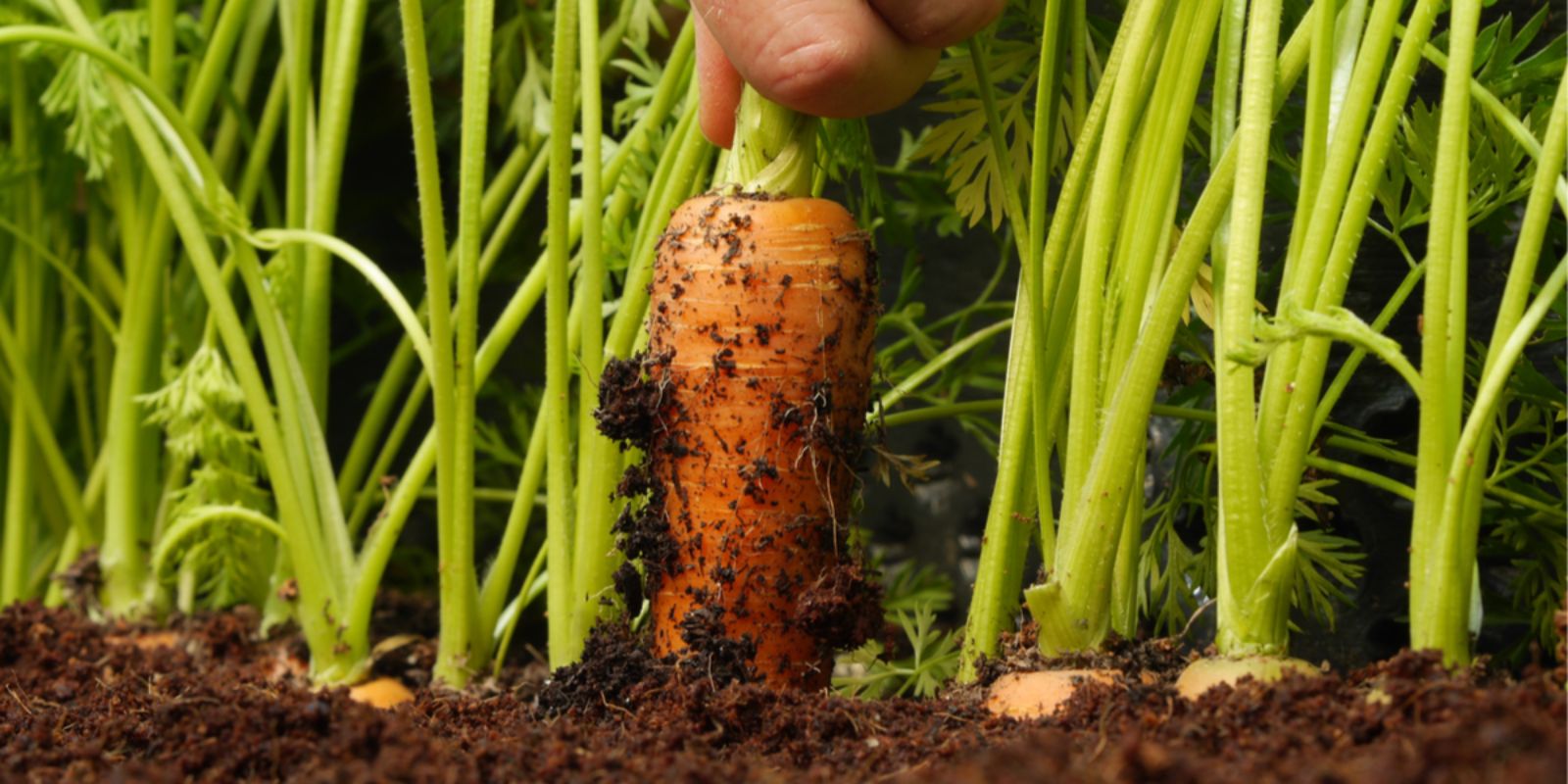Carrots are a staple in many home gardens due to their versatility and nutritional benefits. However, achieving perfectly straight carrots can be a challenge for gardeners. Curved, forked, or twisted carrots are often a result of soil conditions, improper planting techniques, or other common issues. In this guide, we will explore the essential steps to ensure you grow straight, healthy carrots every time.
Understanding Carrot Growth
Carrots (Daucus carota) are root vegetables that develop their edible part underground. Their growth is highly influenced by soil conditions, watering practices, and spacing. Carrots have a long taproot that grows downward, and any obstructions or irregularities in the soil can cause the root to deform.
1. Selecting the Right Carrot Variety
Choosing the right variety is the first step toward growing straight carrots. Certain carrot varieties are known for their straight growth and less propensity for deformities. Here are a few recommended varieties:
- Nantes: Known for its smooth texture and cylindrical shape, Nantes carrots are less likely to fork or twist.
- Danvers: This variety is robust and performs well in various soil types, often resulting in straight roots.
- Chantenay: While slightly shorter, Chantenay carrots are thick and tend to grow straight if given the right conditions.
When selecting seeds, look for varieties specifically bred for uniformity and straight growth.
2. Preparing the Soil
The soil is perhaps the most crucial factor in growing straight carrots. Carrots require loose, well-draining soil to grow properly. Here’s how to prepare your soil:
- Loosen the Soil: Carrots need loose soil to allow their taproots to grow straight down. Use a garden fork or tiller to break up compacted soil to a depth of at least 12 inches (30 cm). Remove rocks, sticks, and other debris that could obstruct root growth.
- Add Organic Matter: Mix in compost or well-rotted manure to improve soil structure and fertility. Organic matter helps retain moisture and provides essential nutrients.
- Check Soil Drainage: Ensure your garden bed has good drainage. Carrots do not like sitting in waterlogged soil, which can lead to rot and deformities.
3. Planting Carrots
Proper planting techniques are essential for growing straight carrots. Follow these steps for optimal results:
- Plant at the Right Time: Carrots are cool-season crops. In most regions, plant them in early spring or late summer for a fall harvest. Avoid planting during the hottest part of summer as high temperatures can lead to irregular growth.
- Sow Seeds Thinly: Plant carrot seeds directly into the prepared soil. Sow seeds about 1/4 inch deep and space them 1-2 inches apart. Thin seedlings to 2-3 inches apart once they emerge to prevent overcrowding.
- Use a Seed Tape: For even spacing and consistent growth, consider using carrot seed tape or pelleted seeds. These methods ensure seeds are evenly distributed and reduce the need for thinning.
4. Maintaining Consistent Moisture
Consistent moisture is crucial for healthy carrot growth. Follow these tips to maintain the right moisture levels:
- Water Regularly: Keep the soil consistently moist but not waterlogged. Water carrots deeply to encourage root growth. Avoid allowing the soil to dry out completely, as this can cause stress and deformities.
- Mulch the Soil: Apply a layer of mulch around the carrot plants to help retain soil moisture and reduce weed competition. Organic mulches like straw or wood chips work well.
5. Ensuring Proper Spacing
Adequate spacing is vital for straight carrot growth. Here’s how to manage spacing effectively:
- Thin Seedlings Early: Once seedlings emerge, thin them out to prevent overcrowding. Crowded carrots compete for nutrients and space, leading to twisted and forked roots. Thin seedlings to 2-3 inches apart when they are 2-3 inches tall.
- Consider Row Spacing: If planting in rows, space rows 12-18 inches apart to allow ample room for carrot growth. Wider rows make it easier to access and maintain the plants.
6. Managing Soil pH
Carrots prefer a slightly acidic to neutral soil pH. Here’s how to manage soil pH effectively:
- Test the Soil: Use a soil test kit to check the pH level of your soil. Carrots grow best in soil with a pH range of 6.0-7.0.
- Adjust Soil pH: If the pH is too high or too low, amend the soil accordingly. For acidic soil, add lime to raise the pH. For alkaline soil, add sulfur to lower the pH.
7. Protecting Carrots from Pests
Pests can damage carrot roots and affect their growth. Here’s how to protect your carrots:
- Use Row Covers: Row covers can help protect carrots from pests like carrot flies and aphids. Ensure the covers are properly secured to prevent pests from getting underneath.
- Inspect Regularly: Check your carrot plants regularly for signs of pests or disease. Remove any affected plants promptly to prevent the spread of problems.
8. Harvesting at the Right Time
Harvesting carrots at the right time is crucial for achieving straight, high-quality roots:
- Check Maturity: Carrots are typically ready to harvest when they reach their mature size, usually between 60-80 days after planting. Gently pull a carrot to check its size.
- Avoid Overcrowding: If carrots are left in the ground too long, they may become overcrowded and start to deform. Harvest them when they are still firm and well-shaped.
Conclusion
Growing perfectly straight carrots requires attention to detail and careful management of soil, spacing, and watering practices. By choosing the right variety, preparing the soil properly, and following the steps outlined above, you can achieve a bountiful harvest of straight, healthy carrots.
Motivational Sentence:
Unlock the secrets to perfect carrots and enjoy the satisfaction of growing flawless roots in your garden! 🥕🌟 Share your carrot-growing journey with us and let’s celebrate those straight, beautiful harvests together! #StraightCarrots #GardenGoals #CarrotHarvest #GreenThumb #VeggieGarden

